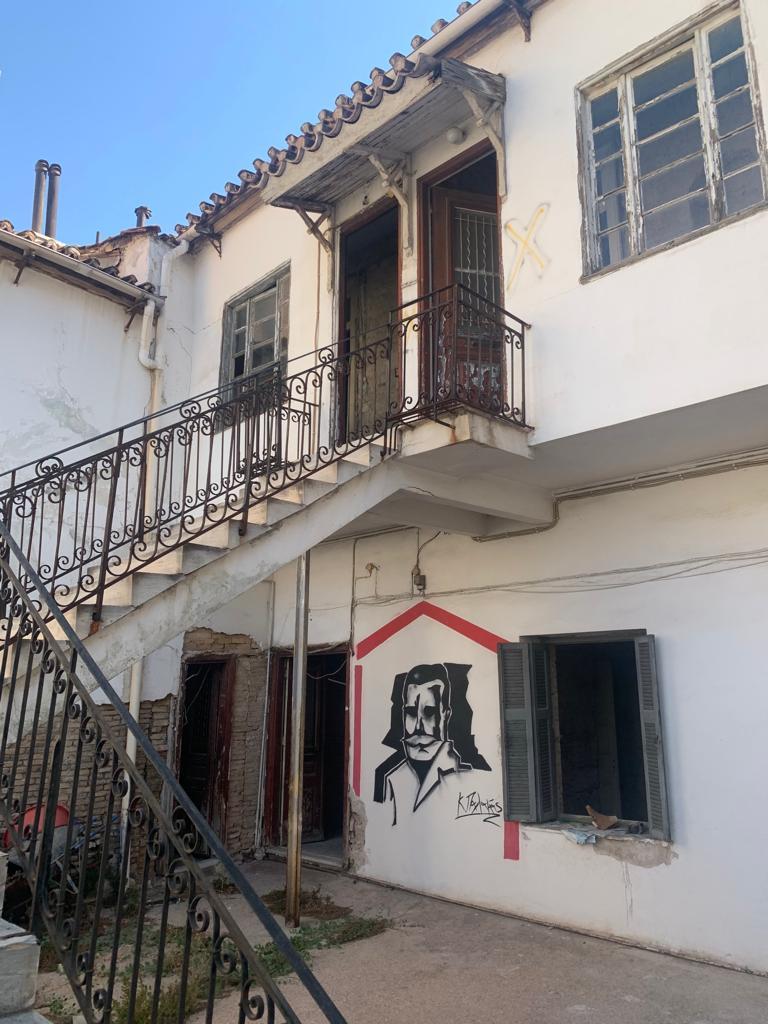
The Ministry of Culture is systematically proceeding with the restoration of the Palamas House -an historical listed monument owned by it- at 5 Perianderos Street, in Plaka, following the positive opinion of the Central Council of Modern Monuments on the restoration study of the building and the conservation study of the interior decoration.
The Minister of Culture Lina Mendoni said: “The historic Palamas House is the poet’s last home, where he lived with his family until his death in 1943. The building is a strong reference point for the history of Athens, but also for our modern history in general, as on 28 February 1943 the funeral service of the poet Kostis Palamas was connected with the largest resistance demonstration in Athens against the German occupation, boosting the national spirit of the Greeks. After decades of abandonment, following the acquisition of its ownership by the Ministry of Culture in 2023, the restoration of the building aims to promote the monument and its integration into the life of the city as a place for the study of modern Greek literature and the dissemination of the work of the great Greek poet. The Palamas House is part of our strategy for the promotion of his privately owned buildings, which are of particular architectural and historical interest, in order to become new cultural nuclei in the historic centre of the capital.”

View of the Palamas House from the courtyard
The monument is a two-storey, elongated building with neoclassical elements, mainly on the first floor. The engraved stonework and the remains of the pilasters on the floor bear witness to the imposing nature of the building. Its appearance has been altered, mainly on the ground floor, by later interventions. The building was a two-storey residential complex, without a basement, with a communal entrance and courtyard, reminiscent of the typology of the Athenian vernacular house. Some later interventions are evident in the stonework as well as on the main façade. The history of the building dates back to the mid-19th century. Radical changes and additions were made to the original building in the early 20th century, in two distinct stages. In the 1930s new additions, landscaping and floor partitioning took place, while interventions were also made in the 1950s.
According to the restoration study, a series of measures are envisaged which aim to ensure the material substance of the building, the introduction of new uses and functions in a way that is harmonious with the form of the monument and appropriate to highlight its importance as a prominent landmark for the history of the city and Greece in general.







Leave A Comment